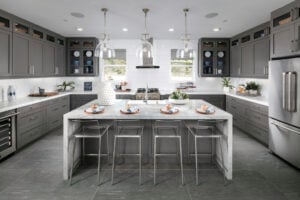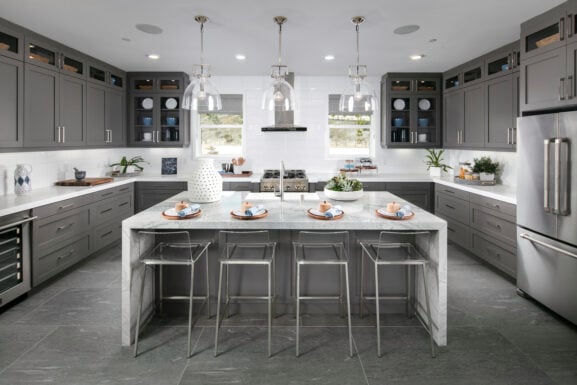Eco-Friendly Luxury Kitchen Remodel in Bradenton: How to Combine Sustainability & Style
- Luxury Kitchen Remodeling Anna Maria, Luxury Kitchen Remodeling Bradenton, Luxury Kitchen Remodeling Bradenton Beach, Luxury Kitchen Remodeling Cortez, Luxury Kitchen Remodeling Ellenton, Luxury Kitchen Remodeling Holmes Beach, Luxury Kitchen Remodeling Manatee County, Luxury Kitchen Remodeling Palmetto, Luxury Kitchen Remodeling Samoset, Luxury Kitchen Remodeling South Bradenton, Luxury Kitchen Remodeling West Bradenton, Luxury Kitchen Remodeling West Samoset
Creating an eco-friendly luxury kitchen remodel in Bradenton is all about blending sustainability with high-end style—think sleek designs that don’t compromise on elegance while minimizing environmental impact. It’s totally doable with the right materials, appliances, and approach. Here’s how to combine green living with luxury flair:
1. Sustainable Materials with a Luxe Edge
- Reclaimed Wood: Opt for cabinetry or an island made from salvaged barn wood or reclaimed timber. The rich, weathered grain adds character and warmth, rivaling any high-end finish. Seal it with low-VOC (volatile organic compound) finishes for a polished look.
- Recycled Metals: A custom range hood in recycled copper or stainless steel offers a stunning focal point. These materials are durable, recyclable, and give off that industrial-chic vibe luxury buyers love.
- Eco-Stone Countertops: Choose recycled glass countertops (like Vetrazzo) or sustainably quarried natural stone (e.g., granite with green certifications). They’re as gorgeous as marble but with a smaller carbon footprint.
- Bamboo: Fast-growing and renewable, bamboo works for flooring or accents. Its sleek, modern texture pairs beautifully with minimalist luxury designs.
2. Energy-Efficient High-End Appliances
- Induction Ranges: Brands like Miele or Wolf offer induction cooktops that use 90% of their energy for cooking (vs. 40–50% for gas). They’re precise, fast, and sleek—perfect for a luxury setup.
- Smart Refrigerators: Sub-Zero’s ENERGY STAR-rated models cut power use while offering premium features like air purification and touch controls. They’re a win for both sustainability and sophistication.
- Dishwashers: Look for Bosch or KitchenAid models with high efficiency ratings (e.g., 40% less water than standard). Their quiet operation and stainless finishes scream luxury without waste.
3. Statement Lighting with Low Impact
- LED Fixtures: Swap traditional bulbs for dimmable LEDs in chandeliers or pendants. A sculptural brass fixture with LED lights—like those from Arteriors—delivers drama and cuts energy use by up to 80%.
- Recycled Glass Pendants: Hand-blown pendants from recycled glass (e.g., Fire & Light) add artisanal charm while keeping waste out of landfills.
- Solar-Powered Options: For kitchens with outdoor access, solar-charged accent lights can enhance ambiance without extra grid power.
4. Water-Saving Luxury Features
- Touchless Faucets: High-end brands like Kohler or Delta offer motion-sensor faucets that reduce water waste by shutting off automatically. Pair them with a matte black or gold finish for that luxe touch.
- Low-Flow Sinks: A deep, farmhouse-style sink with a low-flow aerator maintains bold design while cutting water use by 30–50%.
- Filtered Water Systems: Built-in filtration (e.g., Everpure) eliminates plastic bottle reliance, keeping your eco-game strong and your countertop sleek.
5. Non-Toxic Finishes and Fabrics
- Low-VOC Paints: Use brands like Benjamin Moore Natura for cabinetry or walls. Rich jewel tones or soft neutrals look upscale without off-gassing harmful chemicals.
- Natural Sealants: Opt for plant-based sealants on wood or stone instead of petroleum-based ones. They protect surfaces while keeping indoor air clean.
- Organic Textiles: If your kitchen includes seating, choose cushions or rugs in organic cotton or hemp—luxurious to the touch and sustainably sourced.
6. Design for Efficiency
- Open Layouts: Maximize natural light with big windows or skylights, reducing reliance on artificial lighting. Frame them with recycled aluminum for a modern edge.
- Passive Ventilation: Pair your custom range hood with a design that boosts airflow—like strategically placed vents or operable windows—to cut energy use from exhaust fans.
- Multi-Use Islands: Build an island with reclaimed materials that doubles as a prep space, dining area, and storage. It’s functional luxury with less material waste.
7. Local Sourcing for a Smaller Footprint
- Regional Craftsmen: Hire local contractors or artisans for custom pieces (e.g., a hand-forged hood or cabinetry). It cuts shipping emissions and supports your community.
- Nearby Materials: Source stone, wood, or metal from regional suppliers. A Texas limestone counter or Oregon reclaimed oak stays luxe while shrinking transport costs and carbon impact.
Bringing It Together: Style Meets Sustainability
Picture this: a kitchen with a recycled copper range hood gleaming under LED-lit brass pendants, paired with a bamboo-clad island topped with recycled glass. Induction burners hum quietly beside a touchless gold faucet, all set against low-VOC teal cabinetry. It’s eco-conscious without sacrificing an ounce of opulence.
Cost and Value Considerations
- Upfront Costs: Eco-friendly luxury can run 10–20% more than standard high-end remodels (e.g., $60k–$180k vs. $50k–$150k), due to premium sustainable materials. But energy and water savings offset some of that over time.
- ROI Boost: Green features can bump resale value by 3–7% in eco-minded markets (e.g., Portland, Boulder), per 2024 real estate trends. Buyers love the dual appeal of luxury and responsibility.
Tips for Success
- Certifications to Look For: Seek materials with FSC (Forest Stewardship Council) wood, Greenguard finishes, or Energy Star appliances.
- Balance: Don’t overdo niche green tech (e.g., composting sinks) unless it fits your lifestyle—stick to broadly appealing eco-luxury like LEDs and reclaimed wood.
- Consult Pros: Work with a contractor experienced in sustainable design—they’ll know how to source and install without compromising style.
What’s your favorite Bradenton luxury feature to pair with sustainability? I can dive deeper into specifics if you’ve got a vision in mind!

Is a Bradenton Luxury Kitchen Remodel Worth It? Factors to Consider
Deciding if a luxury kitchen remodel in Bradenton is worth it hinges on your goals—financial return, lifestyle upgrade, or both. For a $50,000–$150,000 project in

Anna Maria Luxury Kitchen Color Schemes That Elevate Your Home’s Aesthetic
In 2025, luxury kitchen design in Anna Maria is all about creating spaces that are both functional and visually stunning. Color plays a pivotal role

Modern vs. Traditional Luxury Kitchen Remodeling in Ellenton: Which Style is Right for You?
When embarking on a luxury kitchen remodel in Ellenton, one of the most significant decisions you’ll face is choosing between a modern or traditional design

Transform Your Home in Cortez with a Luxury Kitchen Remodel: Before & After Inspirations
A luxury kitchen remodel in Cortez can transform your home, enhancing both its functionality and aesthetic appeal. Here are some inspiring before-and-after transformations that showcase

10 Must-Have Features for a High-End Luxury Kitchen Remodel in Holmes Beach
A high-end Holmes Beach luxury kitchen remodel isn’t just about aesthetics—it’s about blending cutting-edge functionality, timeless design, and standout features that elevate the space into

Samoset Luxury Kitchen Remodeling on a Budget: Where to Splurge & Where to Save
Remodeling a Samoset luxury kitchen on a budget is all about strategic spending—splurging where it counts for that high-end wow factor and saving on less

How to Plan a West Samoset Luxury Kitchen Remodel: Expert Tips & Trends
Planning a West Samoset luxury kitchen remodel is an exciting dive into design, functionality, and personal expression—but it’s also a complex project that demands strategy

Celebrity-Inspired Luxury Kitchen Designs in Palmetto You Can Recreate at Home
Celebrity-inspired Palmetto luxury kitchen designs offer a tantalizing blend of glamour, functionality, and personal flair—perfect for recreating that A-list vibe in your own home. Drawing

How to Make a Small Kitchen Look Luxurious: Bradenton Beach Design Secrets
Turning a Bradenton Beach small kitchen into a luxurious space is all about clever design—maximizing every inch while layering in high-end details. You don’t need

West Bradenton Luxury Kitchen Remodeling Mistakes to Avoid: Expert Insights
A luxury kitchen remodel in West Bradenton is a big investment—often $50,000 to $150,000 or more—so sidestepping common pitfalls is critical to nailing both aesthetics

French Country vs. Modern Luxe: Which South Bradenton Luxury Kitchen Style Fits Your Home?
Choosing between a French Country and Modern Luxe kitchen style for your South Bradenton luxury remodel comes down to your home’s vibe, your personal taste,

Eco-Friendly Luxury Kitchen Remodel in Bradenton: How to Combine Sustainability & Style
Creating an eco-friendly luxury kitchen remodel in Bradenton is all about blending sustainability with high-end style—think sleek designs that don’t compromise on elegance while minimizing

Top Luxury Kitchen Remodeling Trends for 2025 in Florida
As we approach 2025, Florida homeowners are embracing sophisticated kitchen renovations that combine cutting-edge technology with timeless elegance. The kitchen continues to evolve as the


